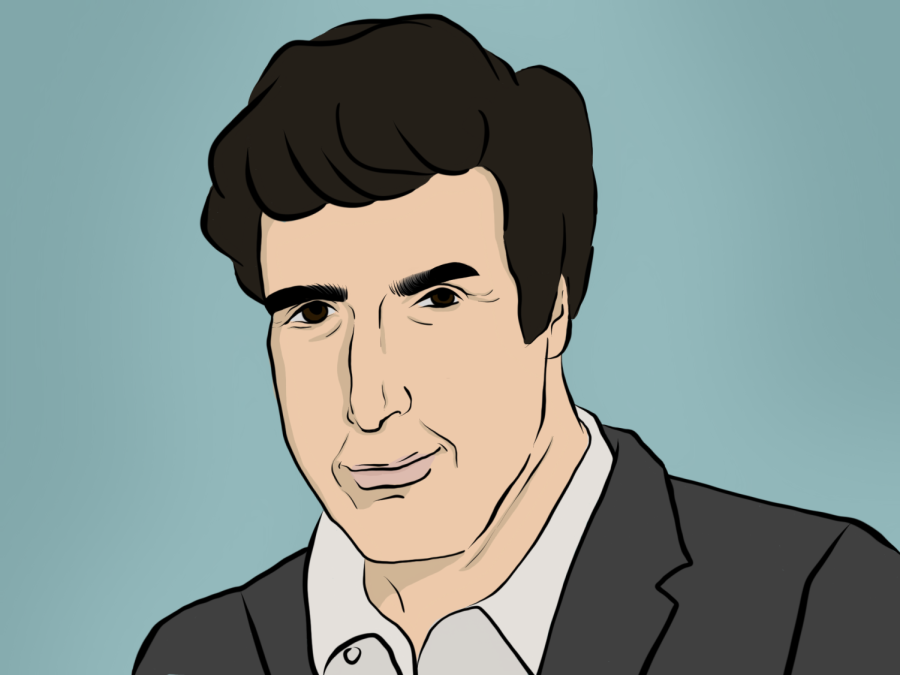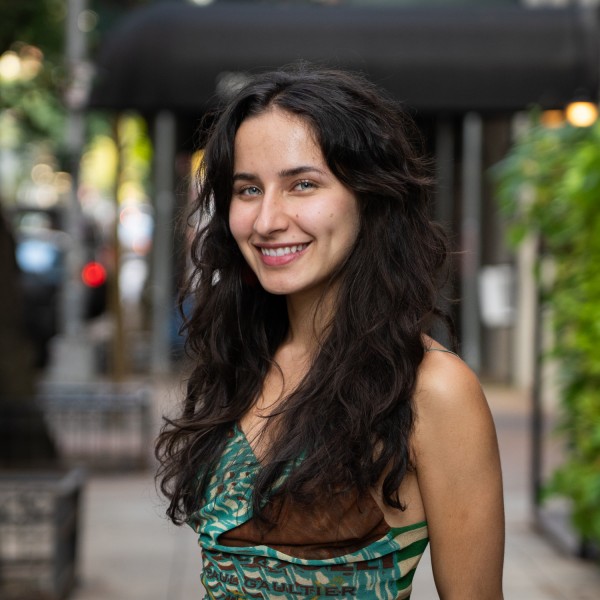An interview with David Copperfield
Encyclopedia entry at 12, NYU professor at 16, television star at 18: the early career of illusionist and performer David Copperfield.
David Seth Kotkin, known popularly by his stage name David Copperfield, has been entertaining audiences for over 50 years with his magic performances and illusions. (Staff Illustration by Susan Behrends Valenzuela)
March 7, 2022
Surely, if you walked into your first class of the semester and discovered your professor was 16 years old, you’d be surprised. NYU students in the late 1970s enrolled in “The Art in Magic” experienced this firsthand with then-prodigy magician David Copperfield, who taught the course for one year.
Perhaps you know his Barclay House Illusion or his Statue of Liberty Disappearance. What you may not know is how he got to where he is today.
Copperfield’s path to magic began as a kid ventriloquist.
“I loved Paul Winchell, ventriloquist of a show called ‘Winchell Mahoney Time’ and the voice of Tigger in the Winnie-the-Pooh cartoons,” Copperfield said. “He was a big star when I was a kid in the late ’50s and early ’60s on TV.”
Once his parents bought him a Jerry Mahoney puppet, a famous doll from “Winchell Mahoney Time,” magic was just around the corner.
“I was not a great ventriloquist, but that led me to magic,” Copperfield said. “I went looking for a ventriloquist figure and where do you look for that but the magic store. … The magic store was like going to heaven. It was like going to Willy Wonka’s chocolate factory.”
Copperfield’s magic was so impressive that by age 12, his inventions were cited in encyclopedias such as the Tarbell Course in Magic, a manual sacred to magicians at that time. His career was heavily influenced by his time hanging out, and later working, at Tannen’s Magic, the oldest operating magic shop in New York City. While Copperfield had interests in many forms of art, his magic was particularly marvelous.
“Though my passion was telling stories, movies and music and so forth, magic became very easy for me,” he said.
Copperfield took advantage of his time at Tannen’s as a teenager, attending magic shows and learning from magicians in his early days.
“I got my fix of storytelling and inspiration for movies and music from going to Broadway shows in New York,” he said. “I would sneak into the second half of a Broadway show when no one else was looking. I was hanging out in New York, hanging out with magicians and Broadway stars.”
One day, when Copperfield was 16, a call came into Tannen’s Magic Shop. At the time, NYU was looking for someone to teach a course on magic and the shop recommended Copperfield.
“I was 16 years old teaching 19-year-olds how to do magic,” Copperfield said. “I was really nervous and didn’t know what the hell I was doing, but it was an amazing time.”
The students respected Copperfield, regardless of the age difference.
“There were psychology students, theater students and film students,” Copperfield said. “It was refreshing for them to get out of the normal educational system.”
After his year at NYU, he starred in a musical called “The Magic Man.” He was 18 years old. When he came back to New York, he was discovered by ABC TV and CBS and began doing specials for them that evolved into his later work.
Now, Copperfield teaches a form of magic to doctors and therapists called Project Magic.
“It is a program that uses magic in the hospital to teach patients magic as a form of therapy,” Copperfield said.
Copperfield discovered his vocation early in life and honed his skills using his mantra: “passion, preparation and persistence.” He believes these three characteristics are always applicable, whether you have found the delights of your life or you’re still searching for them.
“Once you find the thing you’re really passionate about, you have to prepare,” Copperfield said. “After that, it’s about being persistent … constantly you’re going to get knocked down, over and over again, and you have to rise above it using that passion and preparation.”
Copperfield concluded by saying that students should be open to ideas and to possibilities.
“It’s not about fooling people or amazing people,” Copperfield said. “Take that attitude and say, ‘Wait a minute.’ You can question the norm and question why things are done a certain way.”
Fifty years after teaching at NYU, Copperfield continues to invent and tell stories. His unique life and career remain almost as unbelievable as the illusions he performs.
Contact Clara Scholl at [email protected].




























































































































































